The Ultimate Guide to Choosing Grout Color for White Tile
May 04, 2025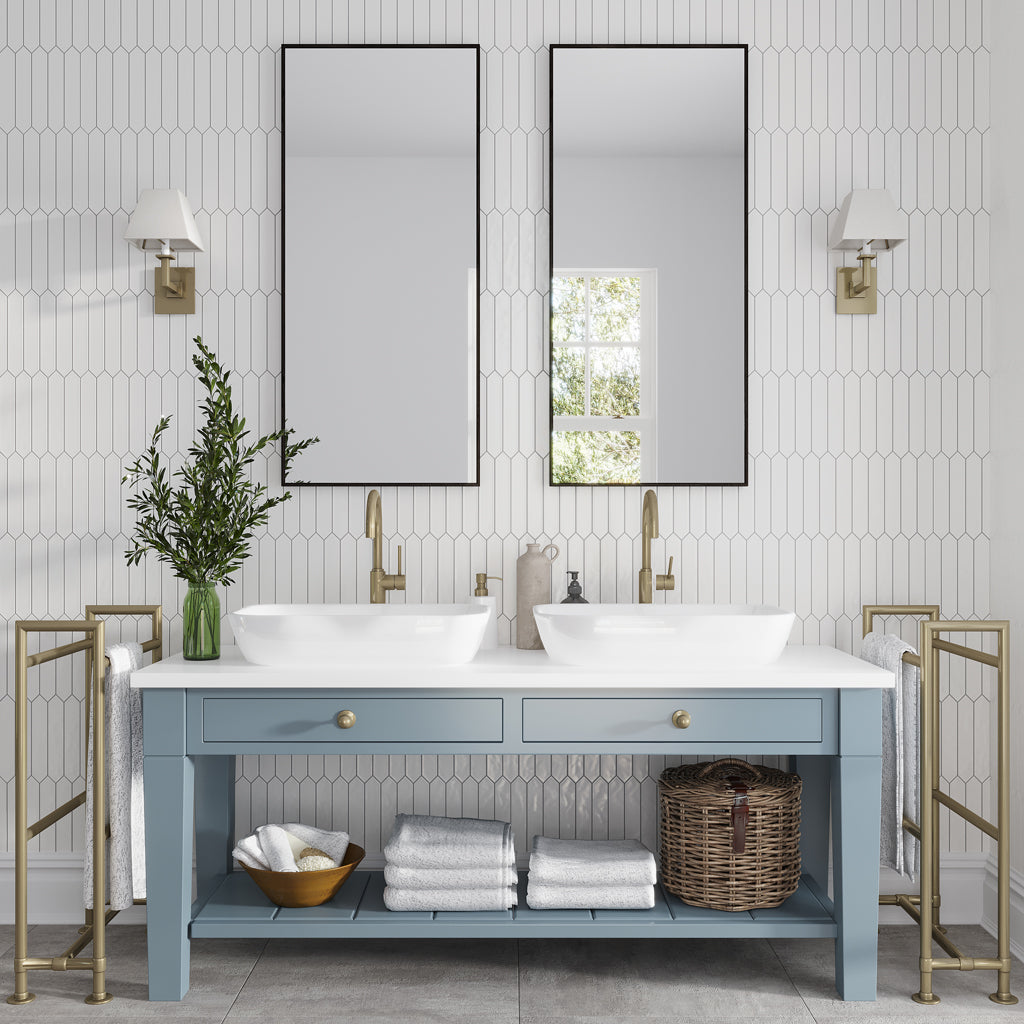
White tile is an aesthetic chameleon—clean, classic, and adaptable to whatever décor scheme you throw its way. But if you've ever looked at a grout chart and asked yourself "why so many colors?" you're not alone. The truth is, tile isn’t the only element important in installation. The choice of grout color can also transform your wall or floor application in a way you never imagined possible. Whether you're updating the kitchen backsplash or installing new white bathroom floors, the question remains: what color grout to use with white tile?
Do you choose a color that blends in or stands out? Do you go bold or stick with something subtle? In this blog post, we're discussing the best color grout for white tile—because it’s often the smallest details that make all the difference. We explore white tile with various grout shades, including white, gray, and black, and offer tips on grout application and care.
1. White Tile with White Grout: Clean, Bright, and Timeless
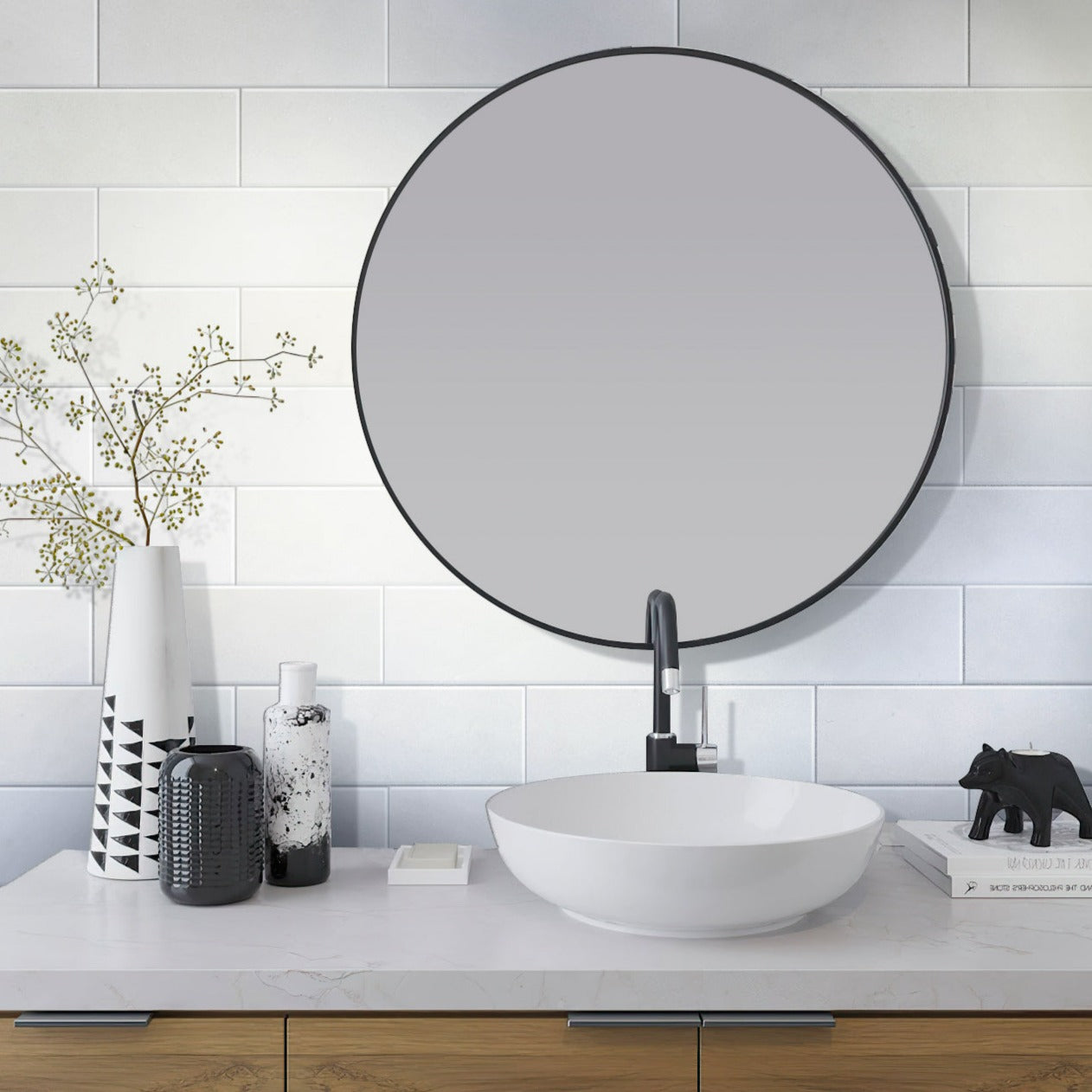
White is among the best color grout for white tile and creates an ultra-clean appearance that’s a height of classic elegance and minimalist design. Matching grout to your tile color maximizes the sense of light—a great option for small, dimly-lit rooms where simplicity is called for. Color indifference between the tile and grout joints eliminates visual interruptions, allowing for a restrained palette that helps make walls and floors appear greater and wider.
White grout fits well for mosaics, including herringbone, honeycomb, and penny tile, where increased grout lines may otherwise result in visual clutter. This color combination allows other design elements—such as hardware, fixtures, and cabinetry—to take center stage. Whether paired with subdued or bold decorative elements, white tile with white grout will easily integrate into your overall design plan. When used with white large-format tiles, the grout lines fade to the back, allowing the style and design of the tile to come to the forefront.
To keep white grout pristine, this can be easily accomplished with proper maintenance. Most grouts are stain resistant, however, regular upkeep is essential to preserve the integrity of the installation. White grout, particularly on high traffic tile flooring or moisture-prone areas like bathrooms, require a quality sealer to guard against daily wear and prevent discoloration. The uniform transition between white tile and white grout is especially suited for backsplashes and walls in modern settings, where the resulting finish lends a light and airy look. Praised for its uncluttered appearance, white tile with white grout continues to be a top pick for contemporary and minimalist décor.
2. White Tile with Gray Grout: Soft Contrast, More Dimension
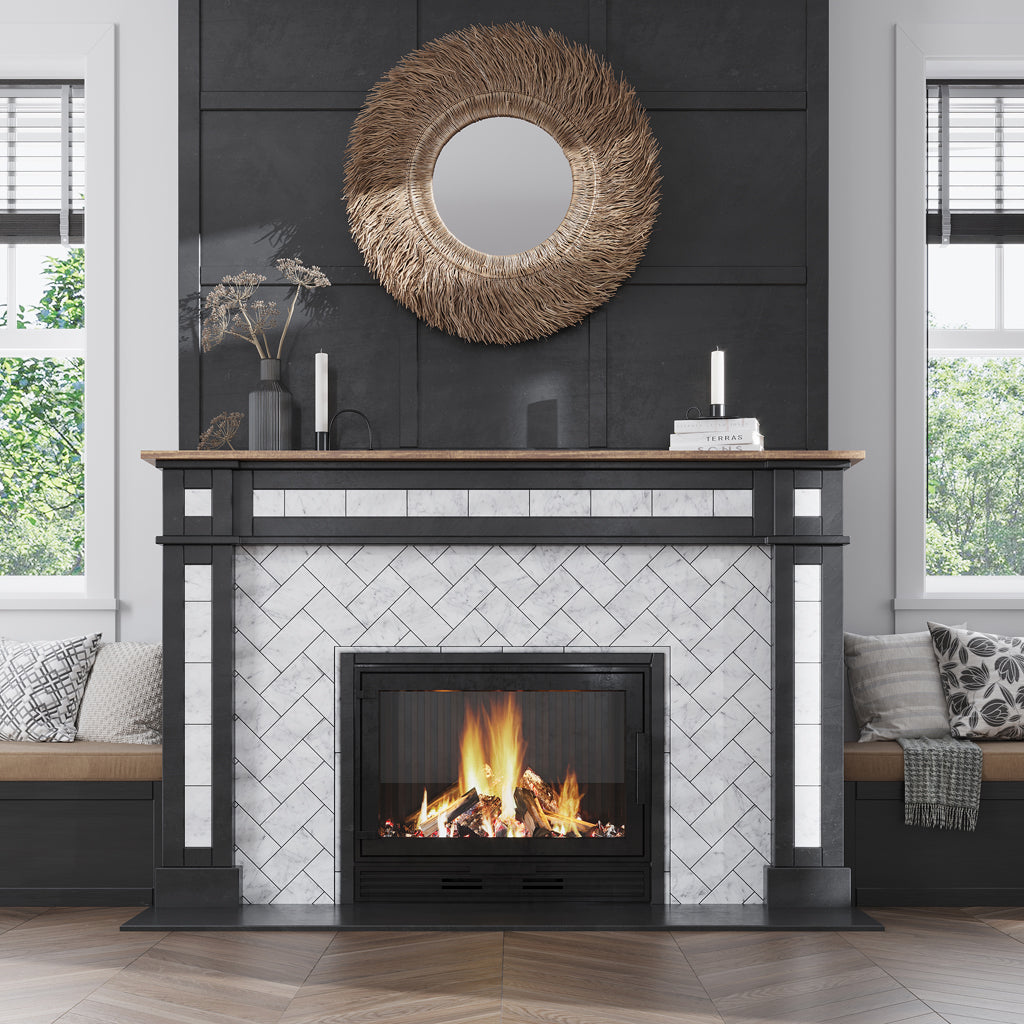
Wondering what other color grout to use with white tile? White tile with gray grout is yet another option that offers a stylish and versatile design perfect for enhancing the visual appeal of your installation. Dark gray grout can add depth and definition to the overall appearance of stark white tiles. This color grout for white floors and walls works especially well with geometric tile— where the gray highlights the tile’s contours and its shape becomes even more apparent.
Beauty in this combination comes from its adaptability. Lighter tones of gray maintain a quiet, more cohesive finish, ideal for minimalist spaces. Mid-tone gray offers a balanced contrast that works for both contemporary and classic settings, while darker gray grout introduces greater contrast—particularly in larger rooms or open-plan areas where large tiles are used to cover significant real estate. This makes gray grout a designer’s choice for calling attention to the tile’s style and craftsmanship without detracting from the room’s other design features.
Gray grout is ideal for high-traffic and moisture-prone areas as it conceals dust, water marks, and minor discoloration effectively. It is best suited for entryway, shower surround, or kitchen wall tile. This union of form and function keeps the area looking sleek with minimal upkeep needed.
White tile with colored grout like gray also delivers on design flexibility. It is compatible with a range of finishes—including honed, matte and glossy-finished tiles. Whether your aesthetic leans toward contemporary, coastal, rustic, or transitional, this combination can be dressed up or down depending on your material and decor choices. Ultimately, gray grout gives just the right contrast to define the beauty of white tile, with a harmonious and enduring appearance that’s intentional and inviting.
3. White Tile with Black Grout: Bold, Dramatic, High Contrast
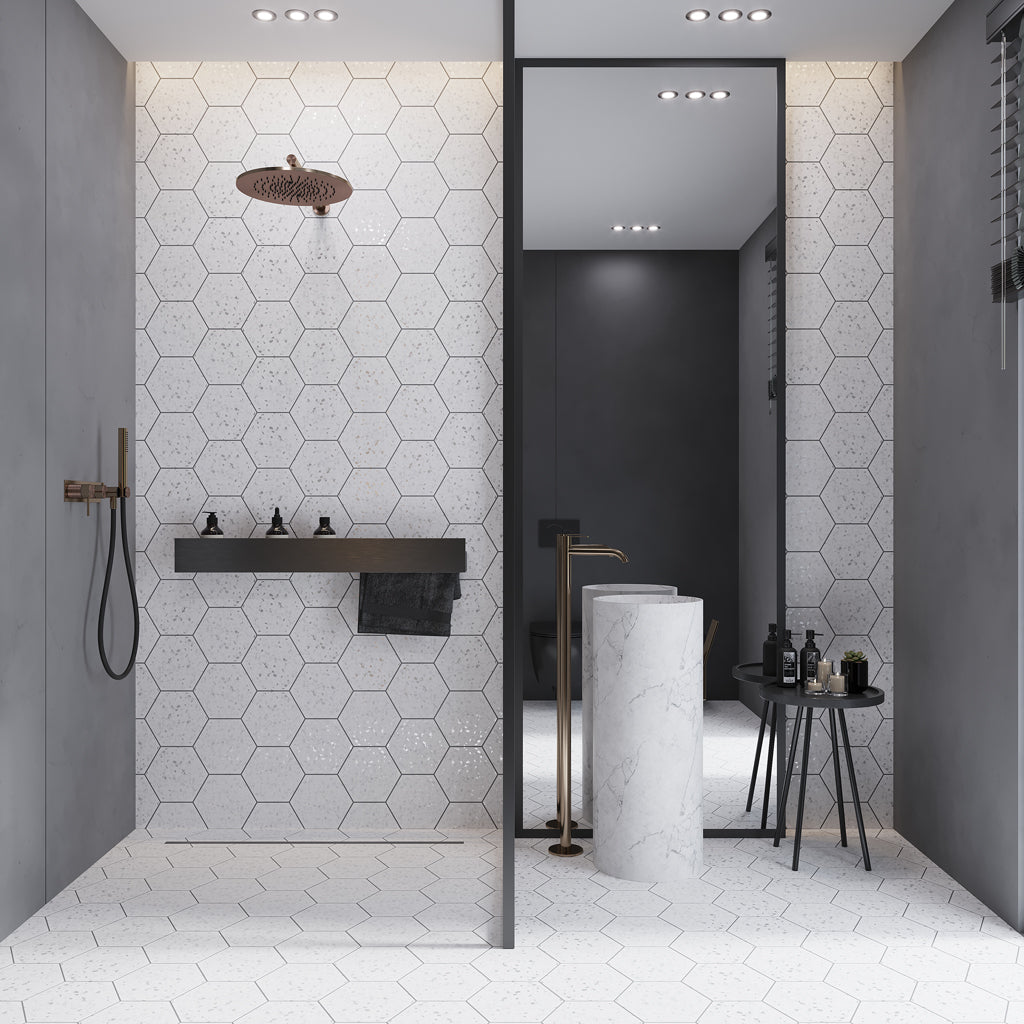
What color grout to use with white tile for a striking contrast that instantly catches the eye? Black Grout! This bold approach creates the most dramatic and high-contrast pairing that effortlessly draws attention to the pattern and shape of the tile. It transforms a simple surface into a graphic, statement-making piece. The contrast of white and black also outlines each tile, defining its unique style with intent. Black grout on classic subway ceramic tiles, large hexagon porcelain formats, or intricate mosaics serves as a visual frame that contributes to the overall impact of your wall or flooring design.
This pairing works particularly well in modern, industrial, or eclectic environments where a bold and regal appearance are desired. Dark black grout not only provides definition but also adds an element of structure to tiled surfaces. It's especially useful when applied to highlight creative and intriguing tile placements such as herringbone, chevron, or vertical stack pattern. In addition, the high contrast makes grout lines a key part of the design rather than a secondary element.
Aside from its visual effect, black grout has practical advantages too. It conceals dirt better, so it's a sensible choice for high-traffic areas and environments exposed to moisture. Kitchens, mudrooms, and bathrooms are particularly benefited by this, as the grout remains rich in color and fresh-looking over time with minimal maintenance.
This configuration also plays nicely with a large range of fittings. It looks great alongside dark cabinetry, raw wood tones, exposed brick, and metallic fixtures. White tile with black grout is a great fit for homeowners who want their tilework to be the focal of the room. It's a bold choice that doesn't fade into the background but rather takes center stage. Graphic, timeless, and equally trendy, this look turns bland tiling in a piece of art.
4. Visualizing Grout Color with White Tile

Visualizing grout color against white tile is a critical aspect of the design process, and will help set the tone for your desired aesthetic. While white tile is a universal choice, the grout color you pair it with will either harmonize or contrast. Creating a physical or digital mood board enables you to play out how the completed application will look with different grout colors. You can also visualize how the overall installation will sit with surrounding decor elements and the room’s lighting—before making the ultimate decision.
As you build your mood board, remember the following tips:
-
Include a Variety of Materials
Layout white tile samples and grout samples in a range of colors (white, gray, black, beige). Add paint swatches and samples of countertops and hardware finishes to form a visual presentation.
-
Observe Color Association
When deciding on what color grout to use with white tile, observe the effect of the grout tone on the tile style and pattern. White grout will often result in a clean finish. Gray grout provides subtle contrast and draws attention to layout. While black grout provides definition and drama.
-
Coordinating Grout Tone with Mood
Choosing the grout color that goes with the atmosphere you wish to create. Some may not think this, but the shade of grout does influence the feel of the room as much as tile does. For instance, soft cool grays can lend a contemporary or industrial finish. Warm grays and beiges will have the space feeling warm, natural, and unobtrusive. Black grout color can be used for a graphic, high contrast and bold feel. While white grout gives off a smooth and crisp finish.
-
Test Under Existing Room Lighting
Place your mood board in the actual room where the tile will be installed. Inspect it at various times of day. Pay attention to how natural and artificial light affect grout and tile color. Also, consider the type of lighting (cool vs. warm lighting).
-
Leverage Online Digital Tools
Another step you can take when choosing what color grout to use with white tile is using visualizers online. These enable you to try grout and tile combinations virtually. Remember: digital screens can't always replicate real-life textures and tones.
-
Evaluate Function and Lifestyle
Your choice of grout not only needs to be pleasing to the eye but also reflect your lifestyle. Dark grout hides dirt well—ideal for high-traffic floors and kitchens—and will work well in a home with active kids and pets. White grout looks clean and brighter but might not always be suitable for a busy household.
Mood-boarding is not an imaginative exercise in isolation—it's an effective method to reduce guesswork and, instead, help you when pitching the best color grout for white tile. By envisioning how your installation will work alongside the rest of your design scheme, you're able to make good decisions that enhance your surroundings.
5. Tips for Application and Care of Grout
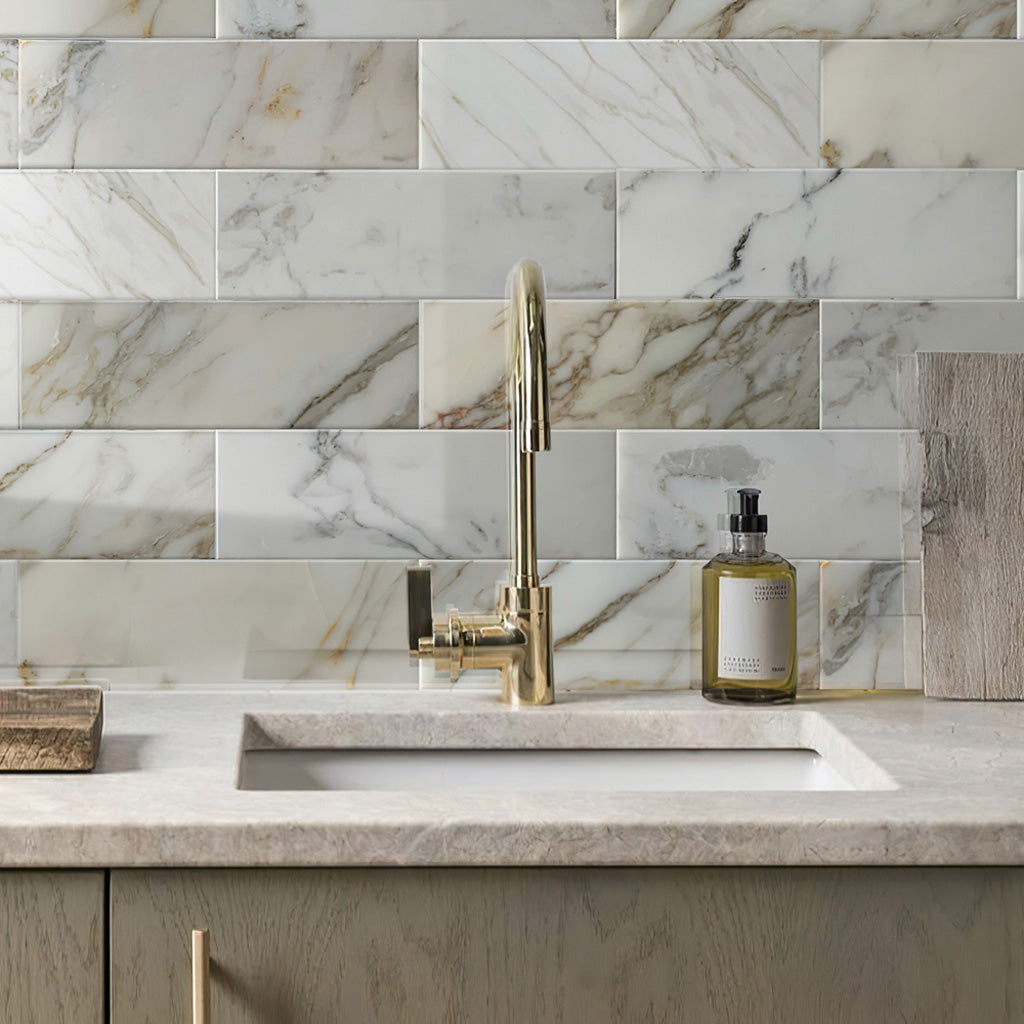
Choose sanded or unsanded grout based on the tile type and joint width. Use unsanded grout for thinner joints (under 1/8 inch) and with delicate tiles such as glass or marble. Use sanded grout is preferred for flooring with larger joints as it is stronger and more crack-resistant. Always mix grout according to manufacturer instructions and verify batches for uniformity. To ensure a flawless match of tile color and grout color, use epoxy grout which offers better color stability. Are you a first time tile installer? Read our blog on How to Grout Tile? A Step-by-Step Guide for DIYers.
Clean grout lines with a pH-neutral cleaner to remove dirt and stains. Avoid harsh chemicals or acid-based cleaners such as bleach or vinegar, as they can degrade grout over time. Clean grout lines in the bathroom and shower after every use to reduce the growth of mildew and mold.
Lastly, inspect grout joints regularly for cracking, shrinking, or wear. Any issues must be repaired immediately with a grout repair kit to avoid water intrusion or structural damage beneath the tile. For protection against water and stains, reseal the grout according to usage and manufacturer's instructions.
Conclusion
If you’ve been wondering what color grout to use with white tile, we hold this guide comes in handy when making the right choice for your space. To sum up, selecting the perfect grout color to accentuate white tile can alter the character of not just the installation, but the overall space. The grout colors discussed above—gray, black, and white—each have their unique aesthetics and functional benefits. By visually imagining your choice of grout, using effective installation techniques, and providing proper maintenance, you can prolong the beauty and performance of your tilework. To learn more about grout selection, check out our blog on The Ultimate Grout Color Selection Guide: Tips for Every Tile Type.
Frequently Asked Questions:
1.Does white tile grout stay white?
Regular cleaning and sealing can help maintain the clean look of white grout. Because this color easily attracts dirt, it is typically best for vertical surfaces such fireplace surrounds, accents walls, and backsplashes.
2. Does gray grout look good with white subway tile?
White subway tile and gray grout are one of the most popular color schemes. The gray grout creates gentle contrast, accentuating the clean and modern lines that subway ceramic wall tile is known for.
3. Should grout be lighter or darker than the tile?
This depends on your preferred aesthetic. White color grout for white tile floor creates a clean, seamless look, while darker grout (like gray or black with white tile) creates contrast and highlights the tile’s shape and pattern. Also consider the room's style, lighting, and maintenance when deciding what color grout to use with white tile.
4. How do you change your grout color to white?
Grout color can be altered to white by using a grout colorant specifically formulated to do so. It's an affordable way of reviving the white shade without regrouting.
5. What is the most popular grout color?
White is one of the best grout color for white tile that homeowners and designers often lean toward. However, gray grout is also revered for the understated contrast it provides. These neutral shades impart timeless style and are easy to coordinate with most design schemes.
6. What color grout should you use for cream tiles?
For cream tiles, warm grout colors such as beige, taupe, or light gray are best to accentuate the tile's natural warmth. This will result in a uniform appearance that works with cream tile while providing subtle definition.
7. Is white grout darker when it's wet?
White grout tends to slightly darken when wet as it absorbs moisture, especially when it’s not properly sealed. However, this is temporary as it will normally revert back to its normal bright shade when dry. Sealing grout longs prevents permanent discoloration.
8. What color grout shows the least dirt?
Beige and gray grout show the least dirt and thus are the best color grout for white tile floors in high-traffic areas. They're especially perfect for kitchens, entryways, and bathrooms.










